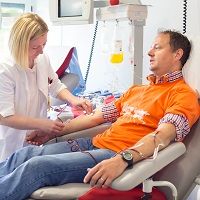Enterovirus Panic Hits Midwest
A respiratory virus called Enterovirus D68 is causing a spike in pediatric hospitalizations and illnesses, putting hospitals on alert across the US.

A respiratory virus called Enterovirus D68 (EV-D68) is causing a spike in pediatric hospitalizations and illnesses, putting hospitals on alert across the US.
Though the virus has been around at least since the 1960s, the recent headline-causing outbreaks show the microbe has evolved, said Bruce Hirsch, MD, an infectious disease expert and assistant professor at the Hofstra/North Shore-LIJ School of Medicine in Hempstead, NY.
“This strain comes from a very common family of viruses but what’s impressive is the dynamics of the outbreak—that it could explode so quickly across the Midwest and make headlines along with Ebola,” Hirsch said.
There have been no reported death from the virus. But there is no specific treatment for the infection and no effective anti-virals currently available. Care is limited to treating symptoms, which have a wide range.
“The symptoms can be subclinical and someone might not even know they had it, or it could go to meningitis,” Hirsch said.
The infection is most dangerous to patients with asthma, Hirsch said.
The panic began when the Missouri Department of Health & Senior Services on Aug. 29 put out an alert saying a Kansas City children’s hospital has treated over 300 cases of respiratory illness, which sent about 15% of pediatric patients to intensive care. Several other states have since asked for federal help in determining whether they are seeing outbreaks of EV-D68.
But so far the US Centers for Disease Control and Prevention (CDC) has confirmed only two clusters of cases, the one at Children’s Mercy Hospital in Kansas City, MO, and a second at University of Chicago Medicine Comer Children’s Hospital in Chicago, IL.
On Sept. 8, the CDC reported in Morbidity and Mortality Weekly on the tallies to date. The agency said that in the Kansas City outbreak it got an Aug. 19 request from Children’s Mercy Hospital to analyze nasopharyngeal specimens from children hospitalized with respiratory infections. The CDC confirmed EV-D68 in 19 of 22 specimens.
In the Chicago outbreak the CDC was notified on Aug. 23 and it confirmed EV-D68 in 11 of 14 specimens. In both cases, most of the patients had histories of asthma.
According to a CDC report from Sept. 30, 2011, the illness has also been documented in many other states and in Europe and Asia.
Hospitals are not legally required to report the illness, so many cases are likely unreported. Hirsch said the virus could easily spread to the rest of the US, including his own turf in the New York City metropolitan area. “With air travel, we’re all connected,” he said.
According to the CDC, the virus was first found in California in 1962 but has rarely been reported since that time.
Transmission is by the oral-fecal route, “So basic hand-washing is very important to prevent it," Hirsch said. In a recent study reported at the Interscience Conference on Antimicrobial Agents and Chemotherapy in Washington, DC, researchers demonstrated just how quickly such contamination can spread.
A team at the University of Arizona put a tracer virus on a doorknob and found that within 2 to 4 hours it could be detected on 40% to 60% of people who touched it.
According to a report in the Journal of General Virology, outbreaks have been documented in North America, Europe, and Asia—including a 2009 outbreak in New York City. In that case, scientists were testing patients for H1N1 and found EV-D68 instead.
Though fear surrounding the epidemic of Ebola could be contributing to people being on edge about other viruses spreading, Hirsch said he did not think the headlines about EV-D68 were strictly a media-generated phenomenon.
“This is real,” he said, “something has happened to make this virus more noticeable.”
.